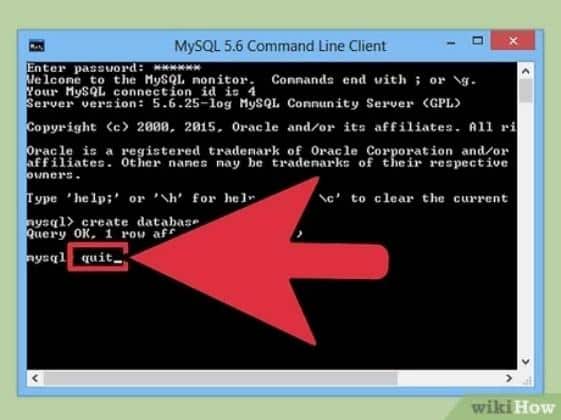Expert Guide to Repair MySQL Database Efficiently

-
Content
- Introduction
- Methods for Repairing MySQL Tables
- Tips for Repairing MySQL Databases
- Conclusion
-
Content
- Introduction
- Methods for Repairing MySQL Tables
- Tips for Repairing MySQL Databases
- Conclusion
Introduction
MySQL, which is widely considered to be one of the most prominent database management systems, serves as the basis for a number of applications across a variety of industries. The durability and efficiency of mysql database are a significant factor in determining whether or not these applications will operate without any interruptions. The periodic maintenance of MySQL databases is required in order to defend against the possibility of data loss and system disruptions. This is in addition to the fact that it ensures the highest possible performance.
In the dynamic world of data management, encountering issues like corruption or data inconsistency in databases and tables is not uncommon. This is where the expertise in repair mysql database and tables becomes indispensable. Repairing databases and tables is crucial for preserving data integrity, which is the cornerstone of accurate and reliable data storage and retrieval. Without proper maintenance and repair strategies, the repercussions can range from minor inconveniences to catastrophic data losses.
Understanding the techniques of how to repair mysql database is not just a technical necessity; it’s a measure to instill confidence in the data handling processes. As data grows in volume and complexity, the ability to swiftly and effectively repair mysql database ensures business continuity, supports database security, and upholds the standards of digital forensics. Thus, learning to adeptly handle these repairs is an invaluable skill for any database administrator or IT professional.
Methods for Repairing MySQL Tables
MySQL database plays an essential role in the administration of data; yet, they are not immune to problems such as corruption or inability to maintain consistency. To ensure that these databases continue to function properly and keep their integrity, it is essential to be familiar with a variety of maintenance techniques. We have included our sub-keywords in the following four thorough ways for restoring MySQL tables, which will provide you with a full knowledge.
1. Use Built-in Tools
Built-in tools like phpMyAdmin and the MySQL Command Line offer robust solutions for database maintenance and repair.
- phpMyAdmin is a user-friendly web-based interface that allows for straightforward mysql database repair. It’s especially useful for performing routine maintenance tasks, analyzing database structures, and executing SQL statements for repair. This tool simplifies the process, making it accessible even to those with less technical expertise in database management. Contact to apply for a Free Trial now!
- The MySQL Command Line provides direct control over the database, offering precision in executing repair commands. This method is preferred by professionals who require detailed control over the repair process, making it an essential tool for addressing complex database issues.
These built-in tools are vital for ensuring regular maintenance and are often the first line of defense in repairing mysql databases and tables.
2. Explore Third-Party Solutions
In cases where built-in tools may not suffice, third-party solutions like DBF Database Forensics Analysis System from SalvationDATA offer advanced repair capabilities.
- Multiple Analysis Functions: These include advanced search capabilities, data filtering, and statistical analysis, which are crucial in identifying and rectifying database issues.
- Unrestricted Accessibility: This feature is particularly important in scenarios where database access is restricted, such as in cases of database attacks or database forensics.
- Extraction and Recovery: It’s adept at handling both normal and compromised database files, which is crucial for maintaining data integrity.
- Patented File Carving Technology: This technology is a game-changer, especially in digital forensics and forensic cyber security, allowing for the recovery of fragmented database files.
- Forensic Reports Generation: The ability to generate reports in various formats is invaluable in documenting the repair process, especially in legal and forensic contexts.
3. Corrupted MySQL Database
For databases that have become corrupted, specialized software like MySQL Recovery Toolbox can be a lifesaver.
MySQL Recovery Toolbox is designed to address the specific needs of a corrupted mysql database. It offers a user-friendly interface and powerful recovery algorithms to repair and restore databases to their original state. This tool is particularly beneficial in scenarios where data recovery is of utmost importance, making it a vital resource in the toolbox of any database administrator. Click here to Update your software!
4. Optimize Database After Repair
Optimization is a critical step in the maintenance of MySQL databases, especially after the repair process. This includes using commands like REPAIR TABLE for MyISAM tables and similar functionalities in SQL Server databases.
- Optimization involves reorganizing the database structure, which can enhance performance and prevent future issues. This step is essential in ensuring long-term database health and security, forming a critical part of database maintenance.
For SQL Server databases specifically, addressing scenarios like an sql server database in recovery is crucial. Post-repair optimization in SQL Server involves checking the integrity of the database and ensuring that the data is consistent and accessible. This process helps in recovering from issues related to database corruption or system failures, making it a vital practice in database management.
It is possible to reduce the likelihood of future problems and ensure that database operations continue to function smoothly by performing regular optimization on MySQL and SQL Server databases. This optimization helps to maintain the databases’ efficiency and integrity.
Tips for Repairing MySQL Databases
When it comes to mysql database maintenance, one of the most important tasks is to repair various databases. It is possible to guarantee that the procedure is both efficient and successful by adhering to specific best practices, regardless of whether you are dealing with ordinary issues or more complicated database assaults. For those interested in fixing MySQL databases, here are some crucial tips:
1. Backup Data
Backing up data is an indispensable preliminary step in the MySQL database repair process. This practice is not just a technical necessity; it’s a strategic move to mitigate risk. By creating backups, you’re essentially creating ‘data insurance’ for your system. This ensures that, should anything go awry during the repair process, you have a reliable means to restore your system to its pre-repair state without any loss of information.
Creating backups should be a routine part of your database maintenance schedule. It’s advisable to automate this process to ensure consistency and to store backups in multiple locations, including off-site storage, which provides additional security against physical disasters. Furthermore, testing your backups regularly to confirm that they can be restored is just as important as creating the backups themselves. This proactive approach not only prepares you for potential database repair scenarios but also for any unforeseen events that could affect your data’s integrity.
2. Follow a Step-by-Step Guide
In the complicated process of repairing MySQL databases, it is vital to follow a step-by-step guidance. This is especially true when dealing with complex difficulties such as SQL database recovery. With this technique, a strategic blueprint is created, which guarantees that all repair processes are covered in their entirety. Beginning with the preliminary evaluation and continuing all the way up to the final verification, it painstakingly walks the user through each phase, making certain that no essential tasks are skipped. For the purpose of conducting a comprehensive analysis and finding a solution to complicated database issues, this methodical movement through the repair procedure is helpful. As a result of its provision of a structured path that reduces the number of mistakes and increases the likelihood of a successful fix, it has proven to be an essential component of an efficient database maintenance and recovery strategy.
3. Note Table-Specific Repair
MySQL databases consist of various tables, each potentially requiring different repair techniques. Understanding and noting the specific requirements for each table, especially when using tools like DBF for mysql or built-in functions like REPAIR TABLE, is crucial. This ensures that the repair process is tailored to the specific needs of each table, enhancing the effectiveness of the repair.
4. Consider Both Manual and Automated Methods
The integration of both manual and automated methods in mysql database repair allows for a multifaceted approach to database management. Automated tools bring a level of efficiency and speed to the repair process, ideal for addressing widespread issues that require broad solutions. On the other hand, manual methods provide the flexibility needed to delve into the specific and often intricate problems unique to each database. This meticulous attention to detail is crucial for custom repairs that automated systems may not be able to handle. By combining these two approaches, database professionals can ensure comprehensive care, balancing quick fixes with in-depth problem solving for a more robust and reliable database system.
5. Regular Maintenance
It is essential to do routine maintenance to avoid major database problems. This include upgrading software, optimizing tables, and doing regular health checks on the database. In addition to averting serious concerns, routine maintenance also facilitates their correction in the event that they do occur. Regular database inspections may help ensure that your database is safe and effective. Tools like dfir tools can be quite helpful in this regard.
By including these recommendations into your approach for mysql database repair, you can greatly improve the process and guarantee system stability and data integrity. These procedures will offer a strong foundation for efficient database administration, regardless of the severity of more serious database assaults or normal maintenance.
Conclusion
In conclusion, the task of repairing a mysql database is intricate yet essential for maintaining data integrity and operational efficiency. Throughout this guide, we have explored various methods and tips, ranging from leveraging built-in tools and advanced third-party solutions like DBF Database Forensics Analysis System, to understanding the nuances of table-specific repairs and the importance of regular maintenance.
These strategies not only aid in immediate repair needs but also contribute significantly to the overall health and security of databases. They are crucial in environments where data is paramount, such as in fields requiring database forensics or digital forensics. The emphasis on regular backups, following structured guides, balancing manual and automated methods, and consistent maintenance routines cannot be overstated.
In the face of challenges like database attacks and other integrity threats, these practices offer a robust defense, ensuring that your repair mysql db efforts result in databases that are reliable and secure. The insights and approaches that have been presented in this article will continue to be of great use to database administrators and IT professionals alike as we continue to negotiate the intricacies of data management. These methods and insights will help them protect one of their most important assets, which is their data.







